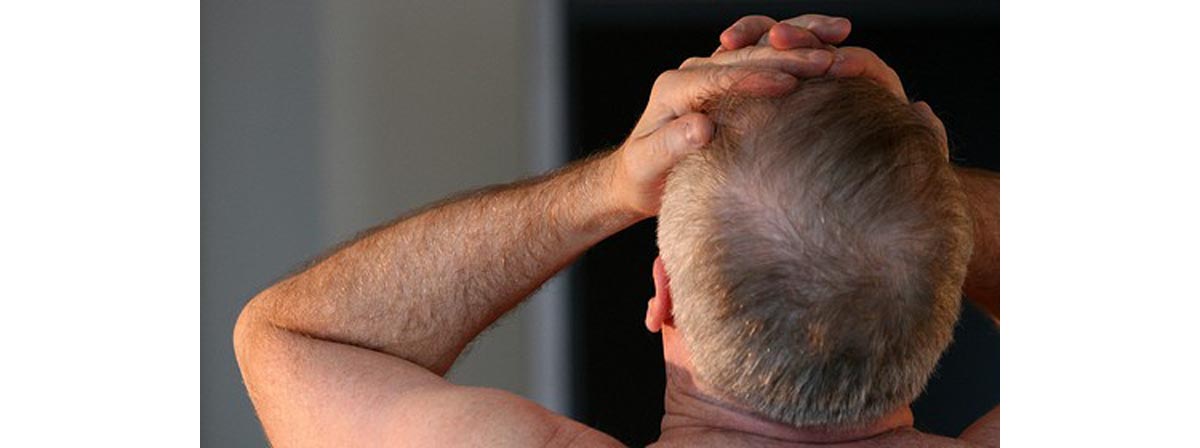What are cluster headaches? Cluster headaches are intense and excruciatingly painful headaches that come on quickly, usually in 15 minutes or less. They only affect just one side of the head. Affecting about 1 in 1000 men and 1 in 10,000 women, these paroxysmal headaches cause pain that is described as stabbing, burning, crushing, shooting, or exploding pain that some sufferers find literally unbearable.
With the pain being so intense and so harsh, you may be wondering are there any natural remedies for these cluster headaches? You're in luck. It's not that hard to take steps to remedy this pain by simply changing your diet. It can make a big difference.
Let's take a look at exactly what these "cluster headaches" are, what causes them, and most importantly how you can take steps to prevent the horrible pain.

The Worst Pain Imaginable
Neurologists speculate that the cluster headache may generate the worst pain experienced by human beings, comparable, as neurologist Dr. Peter Goadsby puts it, to giving birth twice a day without anesthetic. People who have this kind of head pain compare to having a red-hot poker stuck in the head, or even having a leg amputated without any painkillers, or having a cannon ball blow out of their heads. If you've ever experienced a cluster headache you will now that these headaches are certainly painful. Dr. B. T. Horton, who first described the condition, often put cluster headache sufferers, who were usually men, under suicide watch until their symptoms subsided. Although there is no good surgical treatment for this kind of headache, many doctors note that their patients offer to submit to any kind of operation for relief of the pain.
While cluster headaches occur on only one side of the head, they may present on the left side, right side, front, or back of the head. Cluster headaches always appear with at least one allergy-like symptom, such as one teary eye, runny nose but just from one nostril, one puffy eyelid, sore throat, redness of one side of the face, or sweating from the one side of the forehead or cheeks.
Cluster headaches usually last between 15 minutes to three hours. They may occur as often as eight times a day, or for a few people who suffer cluster headaches, the pain never goes away. Cluster headaches may be episodic, occurring frequently for periods of 7 days to a year with a pain-free interval of a month or longer, or chronic, occurring frequently without any significant period of remission.
What Causes Cluster Headaches?
The simple and honest answer to the question of what causes cluster headaches is that nobody really knows. Genetics seem to be involved. If one of your parents has cluster headaches, you have at least a 50% chance of getting them yourself. If both of your parents have cluster headaches, there is a 75% chance that you will inherit at least one copy of the autosomal dominant gene associated with the condition.
The pain of a cluster headache seems to generated by a massive release of the chemical histamine, the same chemical that causes allergies and that is counteracted by antihistamines. The condition is far more common in men than in women, although the few women who develop cluster headaches experience them earlier in life, the average age of onset in men being about 50. There are some suggestions in research studies that the condition is underdiagnosed in Blacks, that their doctors fail to recognize the disease.
What Can You Do About Cluster Headaches?
If you have cluster headaches, you almost certainly will be inclined to cooperate with your doctor. There is a surgical remedy for cluster headaches, and there are relatively potent drugs for the condition (including the ergot alkaloids, a class of medication closely related to the recreational drug LSD), but there are also simple changes in lifestyle that may make cluster headaches less frequent or less severe.

Eat more tomatoes and peppers.
Many natural health authorities counsel against consumption of vegetables from the Nightshade family, including tomatoes, potatoes, peppers, and eggplant, because of their content of a chemical called solanine. For people who have cluster headaches, however, the detrimental solanine content of the vegetables is probably offset by their useful content of lithium.
A lithium carbonate preparation dispensed from pharmacies as Lithobid is often prescribed for cluster headaches. It is also used to treat bipolar disorder, but the amount of lithium used to treat cluster headaches is much lower than is required for cluster headaches.
Tomatoes and peppers grown in desert climates tend to be excellent sources of lithium. The soils in some parts of the United States, especially New England, and some parts of Europe, especially Austria, tend to be deficient in lithium, so home-grown tomatoes and peppers in those locations will not have the same effect. Eating 2 or 3 servings a day, or developing a taste for salsa or pico de gallo, may help reduce the frequency and severity of your headaches.
Avoid foods that contain the amino acid tyramine.
Both cluster headaches and migraines can be aggravated by eating foods that contain the amino acid tyramine. This amino acid is especially abundant in meats and dairy products that are about to spoil, and it is relatively abundant in pickled meats, cured meats, marinated meats, smoked meats (although, oddly enough, ham is not high in tyramine), fermented foods such as miso or sauerkraut, most kinds of cheese, yogurt, fava beans, Italian (flat) green beans, snow peas, coconut, Brazil nuts, bananas, figs, red plums, and red wine. Try reducing or eliminating these foods from your diet and see if your symptoms aren't as severe.
Avoid foods that contain histamine.
Histamine isn't just made in our bodies. It also appears in some foods, notably bananas and walnuts. The author of this article gets cluster headaches after drinking banana daiquiris. It is also important to avoid eating warm-water fish that have not been stored under refrigeration. Ciguatera is a disease characterized by vomiting, nausea, dry mouth, numbness in the lips and tongue, blurry vision, and even temporary blindness, followed by an attack of cluster headaches. This problem most commonly occurs after eating improperly stored red snapper, grouper, or barracuda caught in tropical waters.
Try the kudzu cure.
In the United States, kudzu is best known as a nuisance vine that grows over trees, power lines, and houses, especially in the warm, moist climates of Mississippi, Alabama, and Tennessee. In Japan where the plant originates, however, its enormous root is used as a source of the starch kuzu. Eaten as a bland porridge, kuzu helps relieve inflammation of all kinds. A study conducted at the Yale University School of Medicine found that kudzu extracts, available over-the-counter from herb shops, help reduce both the frequency (in 56% of users) and intensity (in 69% of users) of attacks, although taking kudzu will not eliminate the disease.
Take a deep breath.
Oxygen therapy is frequently prescribed as a treatment for cluster headaches. If you have access to a "rebreather," hooking up to this portable oxygen generator as soon as symptoms appear may greatly reduce pain and duration of the headache. If you don't have access to an oxygen generator, simply breathing more slowly and more deeply, taking longer to exhale than to inhale, inhaling through the nose and exhaling through pursed lips, may reduce cluster headache pain.
- D'Andrea G, Terrazzino S, Leon A, Fortin D, Perini F, Granella F, Bussone G. Elevated levels of circulating trace amines in primary headaches. Neurology. 2004 May 25. 62(10):1701-5.
- Sewell RA. Response of cluster headache to kudzu. Headache. 2009 Jan. 49(1):98-105. doi: 10.1111/j.1526-4610.2008.01268.x.
- Photo courtesy of Quinn Dombrowski by Flickr : www.flickr.com/photos/quinnanya/4570404724/
- Photo courtesy of Jeremy Keith by Flickr : www.flickr.com/photos/adactio/5013415084/

